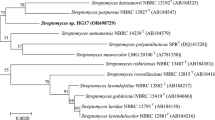Abstract
FivePrototheca strains of human origin are isolated. Morphological and physiological characters are studied. Two strains belong to the speciesPrototheca zophii, two to the speciesP. wickerhamii and the other one toProtheca trispora. The author emphasizes the frequency, with which this genus of chloric algae are lately reported, and the importance of their identification easily confused with that of the yeasts.
Ultimamente hemos venido encontrando cada vez con mayor frecuencia en el material clínico, ejemplares del género Prototheca. La ubicación taxonómica de este género es aún dudosa; se le ha considerado un grupo intermedio entre algas incoloras y hongos (Tubaki, 1959). Nuestras 5 cepas han sido encontradas en un lapso de cuatro años, de un total de 320 muestras.
Resumen
Se han aislado cinco cepas dePrototheca de muestras de origen humano: raspado vulvar, tinea corporis, secreción de oído, plieques de la mano, onicopatía inespecífica. Se estudian los caracteres morfológicos (propiedades asimilativas, termofilia) de estas cepas. Dos de ellas pertenecen a la especiePrototheca zopfii. Dos a la especieP. wickerhamii y la quinta es unaP. trispora. El autor hace resalter la frecuencia cada vez mayor con que se viene aislando este género de algas incoloras en el material patológico y la necesidad de su reconocimiento ya que son fácilmente confundibles con las levaduras.
Similar content being viewed by others
Referencias
Bridge-Cooke, W. M. (1968). Studies in the genusPrototheca. II. Taxonomy.J. Elisha Mitchell Scientific Soc., 84 (1)217–220.
Davies, R. R. yWilkinson, J. L. (1967). Human protothecosis: supplementary studies.Ann. Trop. Med. Parasit., 61 (1)112–115.
Frese, K. &Gedek, B. (1968). A case of protothecosis in a deer.Bericht Münchener Tierärztl. Wchschrft., 81 (9)174–178.
Schiefer, B. &Gedek, B. (1968). Behaviour ofPrototheca species on mammalian tissues.Bericht Münchener Tierärztl. Wochschrft., 24:485–490.
Tubaki, K. &Soneda, M. (1959). Cultural and taxonomical studies onPrototheca.Nagaoa, 6:25–34.
Wicherham, L. S. &Burton, K. A. (1948). Carbon assimilation tests for the classification of yeasts.J. Bact., 56:363–371.
Author information
Authors and Affiliations
Rights and permissions
About this article
Cite this article
Feo, M. Cinco cepas de Prototheca de origen humano. Mycopathologia et Mycologia Applicata 46, 53–59 (1972). https://doi.org/10.1007/BF02051895
Accepted:
Issue Date:
DOI: https://doi.org/10.1007/BF02051895




